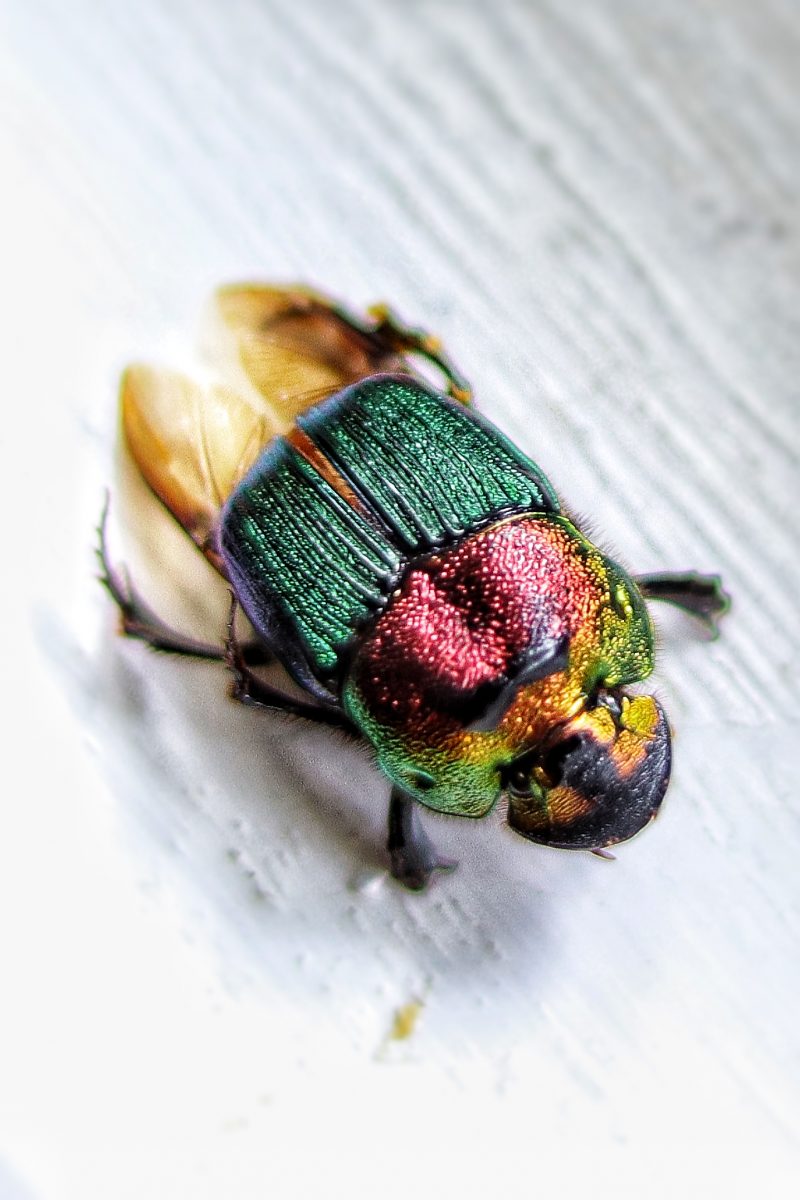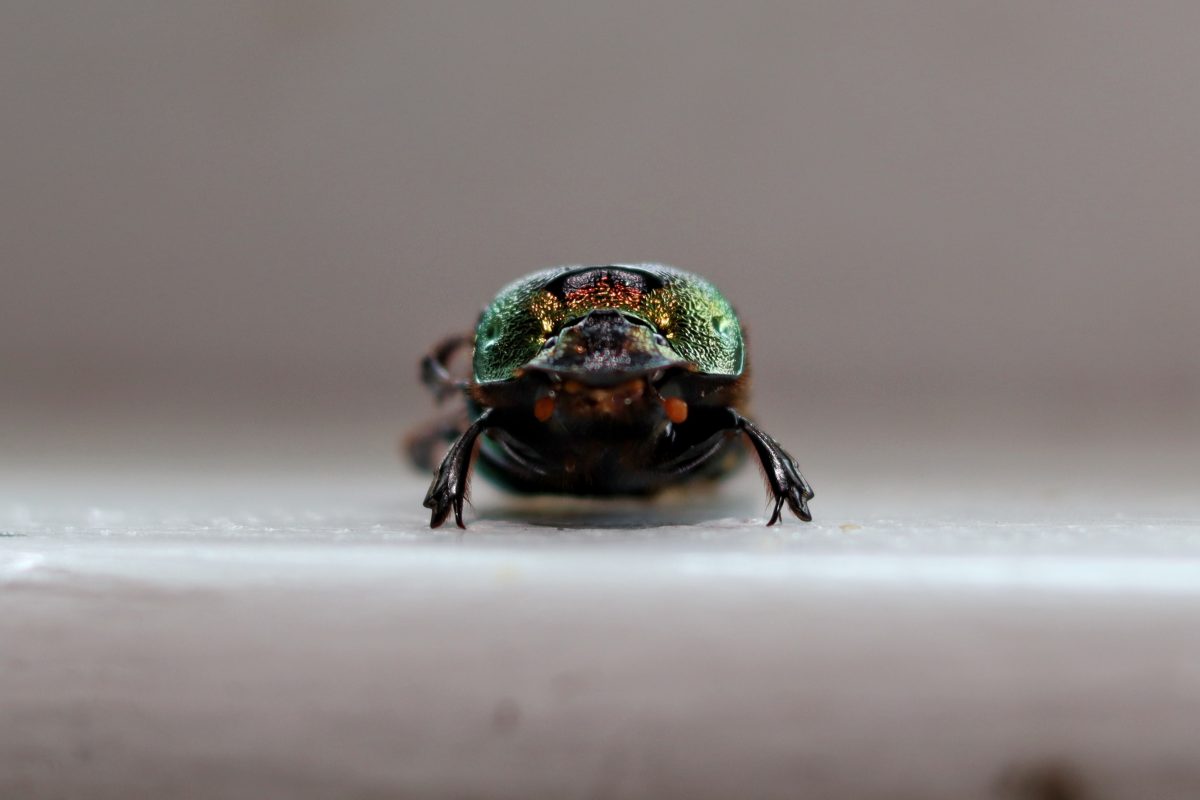Say hello to the rainbow scarab! This beetle was found in our very own town of Mansfield; if you keep your eyes peeled you may find one yourself! This colorful beetle is a great example of how a small insect can make a huge positive impact on its environment.
The rainbow scarab is a dung beetle that creates tunnels to bury animal dung which it feeds on and lays its eggs in. Animal dung is important in our ecosystems because it recycles nutrients back to the environment that plants need to grow. Having the dung buried under the ground is especially beneficial because it prevents harmful insects such as parasites from getting to it. If a large amount of dung piles up because there are a lot of animals on a farm, it leads to big problems like getting into the water supply. The tunnels that these beetles are creating also make it easier for water to get into the soil. Because these beetles are removing this problem and enhancing the soil while doing it, they are a farmer's best friend!

While most dung beetles display colors of browns and blacks, this beetle has an iridescent appearance making it easy to see why it is called the rainbow scarab. In this picture, we can see the shape of the beetle's head, which looks like the end of a shovel and helps the beetle dig into dirt.

This beetle is a female as it lacks the distinctive head horn that is characteristic of males. All beetles have a rigid covering for their wings that is actually a modified wing itself.
